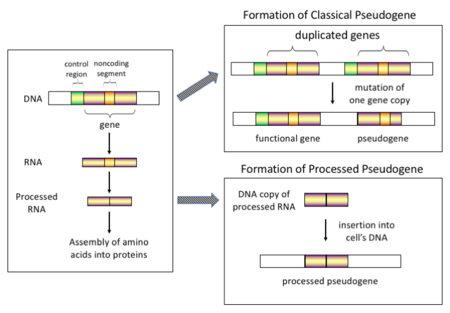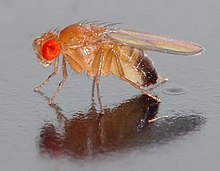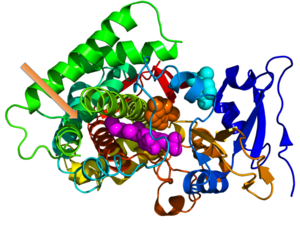Mechanism of classical and processed pseudogene formation
Pseudogenes, sometimes referred to as zombie genes in the media, are segments of DNA that are related to real genes. Pseudogenes have lost at least some functionality, relative to the complete gene, in cellular gene expression or protein-coding ability. Pseudogenes often result from the accumulation of multiple mutations within a gene whose product is not required for the survival of the organism, but can also be caused by genomic copy number variation (CNV) where segments of 1+ kb are duplicated or deleted. Although not fully functional, pseudogenes may be functional, similar to other kinds of noncoding DNA, which can perform regulatory functions.
The "pseudo" in "pseudogene" implies a variation in sequence relative
to the parent coding gene, but does not necessarily indicate
pseudo-function. Despite being non-coding, many pseudogenes have
important roles in normal physiology and abnormal pathology.
Although some pseudogenes do not have introns or promoters (such pseudogenes are copied from messenger RNA and incorporated into the chromosome, and are called "processed pseudogenes"), others have some gene-like features such as promoters, CpG islands, and splice sites.
They are different from normal genes due to either a lack of
protein-coding ability resulting from a variety of disabling mutations
(e.g. premature stop codons or frameshifts), a lack of transcription, or their inability to encode RNA (such as with ribosomal RNA pseudogenes). The term "pseudogene" was coined in 1977 by Jacq et al.
Because pseudogenes were initially thought of as the last stop for genomic material that could be removed from the genome, they were often labeled as junk DNA. Nonetheless, pseudogenes contain biological and evolutionary histories within their sequences. This is due to a pseudogene's shared ancestry with a functional gene: in the same way that Darwin thought of two species as possibly having a shared common ancestry followed by millions of years of evolutionary divergence,
a pseudogene and its associated functional gene also share a common
ancestor and have diverged as separate genetic entities over millions of
years.
Properties
Pseudogenes are usually characterized by a combination of homology to a known gene and loss of some functionality. That is, although every pseudogene has a DNA sequence that is similar to some functional gene, they are usually unable to produce functional final protein products.
Pseudogenes are sometimes difficult to identify and characterize in
genomes, because the two requirements of homology and loss of
functionality are usually implied through sequence alignments rather
than biologically proven.
- Homology is implied by sequence identity between the DNA sequences of the pseudogene and parent gene. After aligning the two sequences, the percentage of identical base pairs is computed. A high sequence identity means that it is highly likely that these two sequences diverged from a common ancestral sequence (are homologous), and highly unlikely that these two sequences have evolved independently.
- Nonfunctionality can manifest itself in many ways. Normally, a gene must go through several steps to a fully functional protein: Transcription, pre-mRNA processing, translation, and protein folding are all required parts of this process. If any of these steps fails, then the sequence may be considered nonfunctional. In high-throughput pseudogene identification, the most commonly identified disablements are premature stop codons and frameshifts, which almost universally prevent the translation of a functional protein product.
Pseudogenes for RNA genes are usually more difficult to discover as they do not need to be translated and thus do not have "reading frames".
Pseudogenes can complicate molecular genetic studies. For example, amplification of a gene by PCR
may simultaneously amplify a pseudogene that shares similar sequences.
This is known as PCR bias or amplification bias. Similarly, pseudogenes
are sometimes annotated as genes in genome sequences.
Processed pseudogenes often pose a problem for gene prediction
programs, often being misidentified as real genes or exons. It has been
proposed that identification of processed pseudogenes can help improve
the accuracy of gene prediction methods.
Recently 140 human pseudogenes have been shown to be translated. However, the function, if any, of the protein products is unknown.
Types and origin
There
are four main types of pseudogenes, all with distinct mechanisms of
origin and characteristic features. The classifications of pseudogenes
are as follows:
Processed
Processed pseudogene production
Processed (or retrotransposed) pseudogenes. In higher eukaryotes, particularly mammals,
retrotransposition is a fairly common event that has had a huge impact
on the composition of the genome. For example, somewhere between 30–44%
of the human genome consists of repetitive elements such as SINEs and LINEs. In the process of retrotransposition, a portion of the mRNA or hnRNA transcript of a gene is spontaneously reverse transcribed
back into DNA and inserted into chromosomal DNA. Although
retrotransposons usually create copies of themselves, it has been shown
in an in vitro system that they can create retrotransposed copies of random genes, too. Once these pseudogenes are inserted back into the genome, they usually contain a poly-A tail, and usually have had their introns spliced out; these are both hallmark features of cDNAs.
However, because they are derived from an RNA product, processed
pseudogenes also lack the upstream promoters of normal genes; thus, they
are considered "dead on arrival", becoming non-functional pseudogenes
immediately upon the retrotransposition event. However, these insertions occasionally contribute exons to existing genes, usually via alternatively spliced transcripts.
A further characteristic of processed pseudogenes is common truncation
of the 5' end relative to the parent sequence, which is a result of the
relatively non-processive retrotransposition mechanism that creates
processed pseudogenes. Processed pseudogenes are continually being created in primates. Human populations, for example, have distinct sets of processed pseudogenes across its individuals.
Non-processed
One way a pseudogene may arise
Non-processed (or duplicated) pseudogenes. Gene duplication
is another common and important process in the evolution of genomes. A
copy of a functional gene may arise as a result of a gene duplication
event caused by homologous recombination at, for example, repetitive sine sequences on misaligned chromosomes and subsequently acquire mutations
that cause the copy to lose the original gene's function. Duplicated
pseudogenes usually have all the same characteristics as genes,
including an intact exon-intron structure and regulatory sequences. The loss of a duplicated gene's functionality usually has little effect on an organism's fitness,
since an intact functional copy still exists. According to some
evolutionary models, shared duplicated pseudogenes indicate the
evolutionary relatedness of humans and the other primates.
If pseudogenization is due to gene duplication, it usually occurs in
the first few million years after the gene duplication, provided the
gene has not been subjected to any selection pressure. Gene duplication generates functional redundancy
and it is not normally advantageous to carry two identical genes.
Mutations that disrupt either the structure or the function of either of
the two genes are not deleterious and will not be removed through the
selection process. As a result, the gene that has been mutated gradually
becomes a pseudogene and will be either unexpressed or functionless.
This kind of evolutionary fate is shown by population genetic modeling and also by genome analysis.
According to evolutionary context, these pseudogenes will either be
deleted or become so distinct from the parental genes so that they will
no longer be identifiable. Relatively young pseudogenes can be
recognized due to their sequence similarity.
Unitary pseudogenes
2 ways a pseuogene may be produced
Various mutations (such as indels and nonsense mutations) can prevent a gene from being normally transcribed or translated,
and thus the gene may become less- or non-functional or "deactivated".
These are the same mechanisms by which non-processed genes become
pseudogenes, but the difference in this case is that the gene was not
duplicated before pseudogenization. Normally, such a pseudogene would be
unlikely to become fixed in a population, but various population
effects, such as genetic drift, a population bottleneck, or, in some cases, natural selection, can lead to fixation. The classic example of a unitary pseudogene is the gene that presumably coded the enzyme L-gulono-γ-lactone oxidase (GULO) in primates. In all mammals studied besides primates (except guinea pigs), GULO aids in the biosynthesis of ascorbic acid (vitamin C), but it exists as a disabled gene (GULOP) in humans and other primates. Another more recent example of a disabled gene links the deactivation of the caspase 12 gene (through a nonsense mutation) to positive selection in humans.
It has been shown that processed pseudogenes accumulate mutations faster than non-processed pseudogenes.
Pseudo-pseudogenes
The rapid proliferation of DNA sequencing technologies has led to the identification of many apparent pseudogenes using gene prediction techniques. Pseudogenes are often identified by the appearance of a premature stop codon in a predicted mRNA sequence, which would, in theory, prevent synthesis (translation) of the normal protein
product of the original gene. There have been some reports of
translational readthrough of such premature stop codons in mammals, as
reviewed in the "Translational readthrough"
section of the stop codon article. As alluded to in the figure above, a
small amount of the protein product of such readthrough may still be
recognizable and function at some level. If so, the pseudogene can be
subject to natural selection. That appears to have happened during the evolution of Drosophila species, as described next.
Drosophila melanogaster
In 2016 it was reported that 4 predicted pseudogenes in multiple Drosophila species actually encode proteins with biologically important functions, "suggesting that such 'pseudo-pseudogenes' could represent a widespread phenomenon". For example, the functional protein (an olfactory receptor) is found only in neurons. This finding of tissue-specific biologically-functional genes that could have been dismissed as pseudogenes by in silico
analysis complicates the analysis of sequence data. As of 2012, it
appeared that there are approximately 12,000–14,000 pseudogenes in the
human genome,
almost comparable to the oft-cited approximate value of 20,000 genes in
our genome. The current work may also help to explain why we are able
to live with 20 to 100 putative homozygous loss of function mutations in our genomes.
Through reanalysis of over 50 million peptides generated from the human proteome and separated by mass spectrometry,
it now (2016) appears that there are at least 19,262 human proteins
produced from 16,271 genes or clusters of genes. From this analysis, 8
new protein coding genes that were previously considered pseudogenes
were identified.
Examples of pseudogene function
Drosophila glutamate receptor. The term "pseudo-pseudogene" was coined for the gene encoding the chemosensory ionotropic glutamate receptor Ir75a of Drosophila sechellia, which bears a premature termination codon (PTC) and was thus classified as a pseudogene. However, in vivo the D. sechellia
Ir75a locus produces a functional receptor, owing to translational
read-through of the PTC. Read-through is detected only in neurons and
depends on the nucleotide sequence downstream of the PTC.
siRNAs. Some endogenous siRNAs
appear to be derived from pseudogenes, and thus some pseudogenes play a
role in regulating protein-coding transcripts, as reviewed.
One of the many examples is psiPPM1K. Processing of RNAs transcribed
from psiPPM1K yield siRNAs that can act to suppress the most common type
of liver cancer, hepatocellular carcinoma.
This and much other research has led to considerable excitement about
the possibility of targeting pseudogenes with/as therapeutic agents.
piRNAs. Some piRNAs are derived from pseudogenes located in piRNA clusters. Those piRNAs regulate genes via the piRNA pathway in mammalian testes and are crucial for limiting transposable element damage to the genome.
BRAF pseudogene acts as a ceRNA
microRNAs. There are many reports of pseudogene transcripts acting as microRNA decoys. Perhaps the earliest definitive example of such a pseudogene involved in cancer is the pseudogene of BRAF. The BRAF gene is a proto-oncogene
that, when mutated, is associated with many cancers. Normally, the
amount of BRAF protein is kept under control in cells through the action
of miRNA. In normal situations, the amount of RNA from BRAF and the
pseudogene BRAFP1 compete for miRNA, but the balance of the 2 RNAs is
such that cells grow normally. However, when BRAFP1 RNA expression is
increased (either experimentally or by natural mutations), less miRNA is
available to control the expression of BRAF, and the increased amount
of BRAF protein causes cancer. This sort of competition for regulatory elements by RNAs that are endogenous to the genome has given rise to the term ceRNA.
PTEN. The PTEN gene is a known tumor suppressor gene.
The PTEN pseudogene, PTENP1 is a processed pseudogene that is very
similar in its genetic sequence to the wild-type gene. However, PTENP1
has a missense mutation which eliminates the codon for the initiating methionine and thus prevents translation of the normal PTEN protein. In spite of that, PTENP1 appears to play a role in oncogenesis. The 3' UTR of PTENP1 mRNA functions as a decoy of PTEN mRNA by targeting micro RNAs due to its similarity to the PTEN gene, and overexpression of the 3' UTR resulted in an increase of PTEN protein level.
That is, overexpression of the PTENP1 3' UTR leads to increased
regulation and suppression of cancerous tumors. The biology of this
system is basically the inverse of the BRAF system described above.
Potogenes. Pseudogenes can, over evolutionary time scales, participate in gene conversion and other mutational events that may give rise to new or newly-functional genes. This has led to the concept that pseudogenes could be viewed as potogenes: potential genes for evolutionary diversification.
Misidentified pseudogenes
Sometimes
genes are thought to be pseudogenes, usually based on bioinformatic
analysis, but then turn out to be functional genes. Examples include the
Drosophila jingwei gene which encodes a functional alcohol dehydrogenase enzyme in vivo.
Another example is the human gene encoding phosphoglycerate mutase which was thought to be a pseudogene but which turned out to be a functional gene, now named PGAM4. Mutations in it actually cause infertility.
Bacterial pseudogenes
Pseudogenes can be found in bacteria. Most are in bacteria that are not free-living; that is, they are either symbionts or obligate intracellular parasites
and thus do not require many genes that are needed by bacteria living
in changeable environments. An extreme example is the genome of Mycobacterium leprae, the causative agent of leprosy. It has been reported to have 1,133 pseudogenes which give rise to approximately 50% of its transcriptome.









